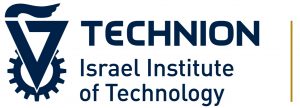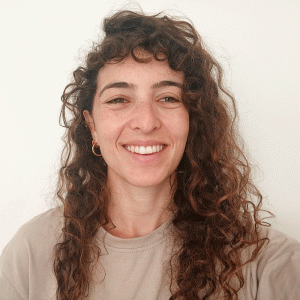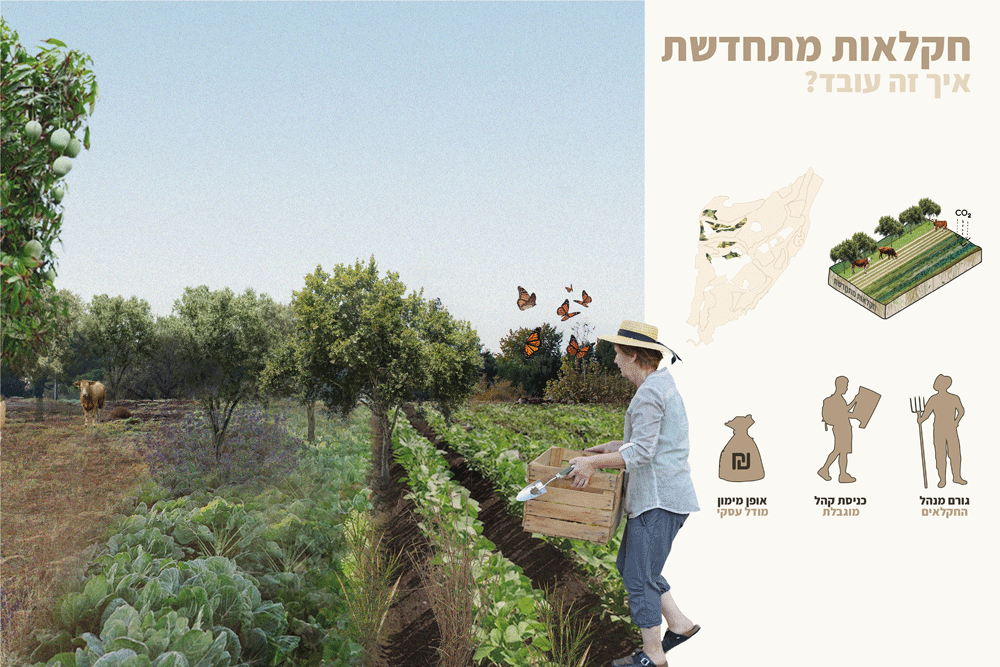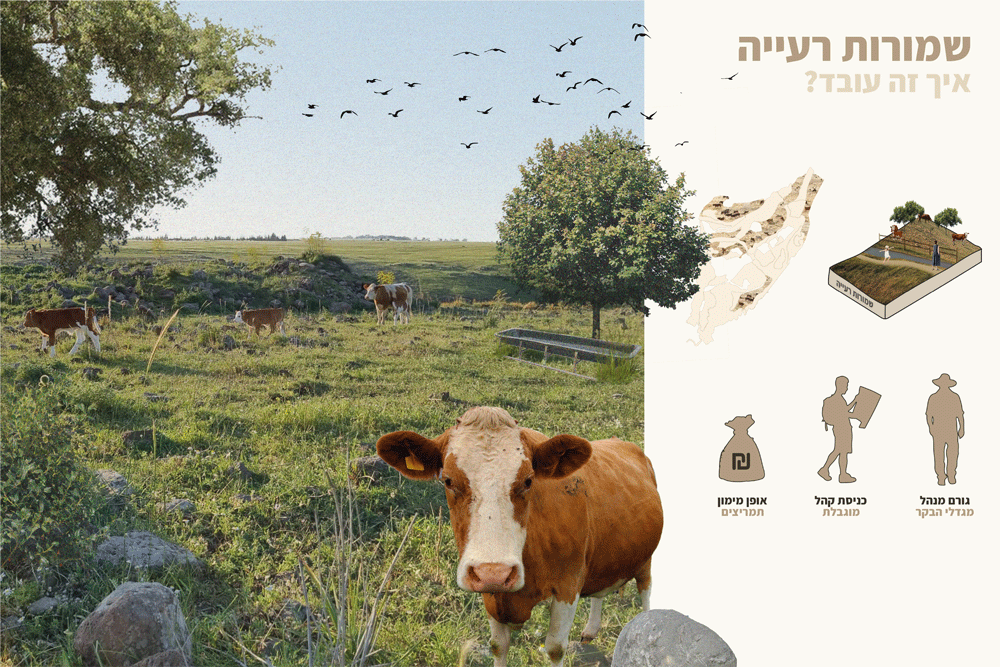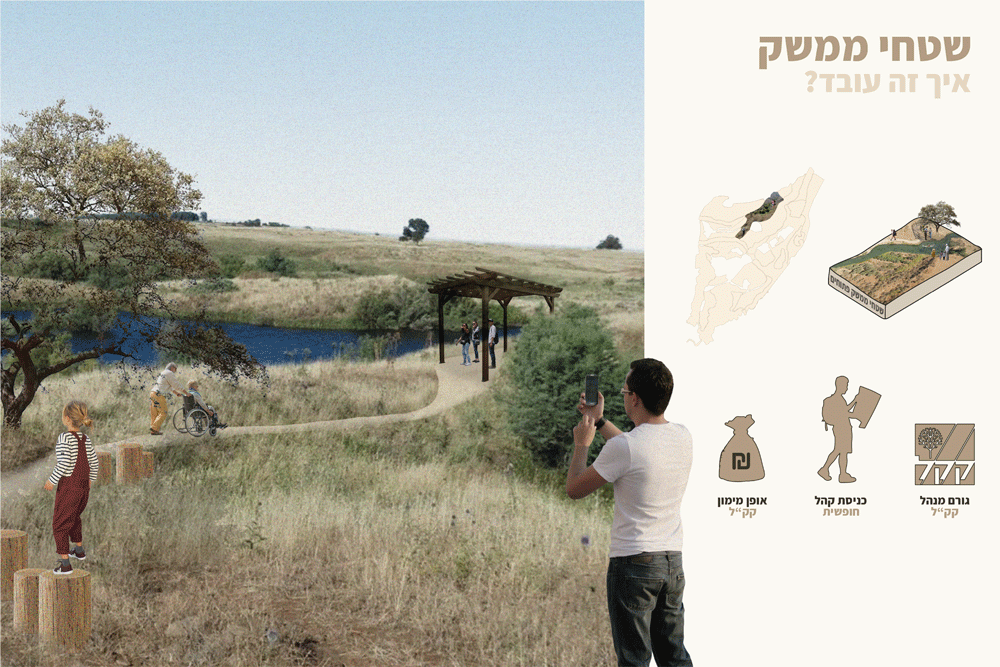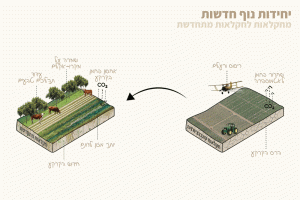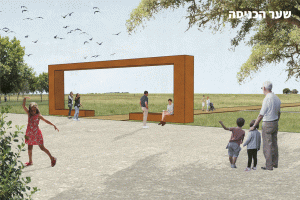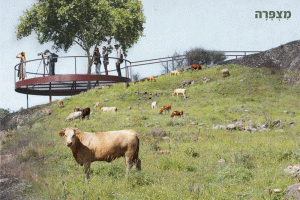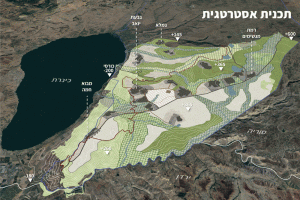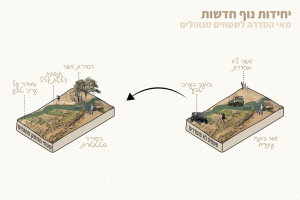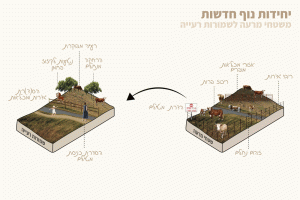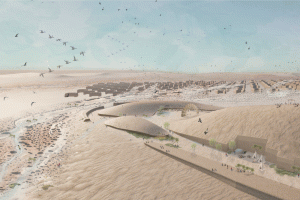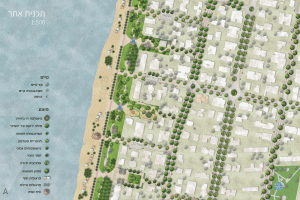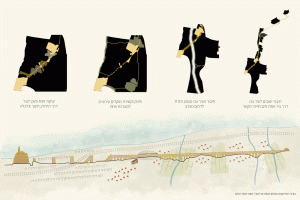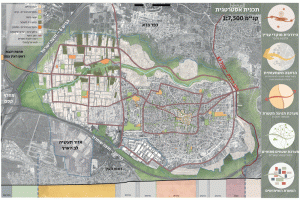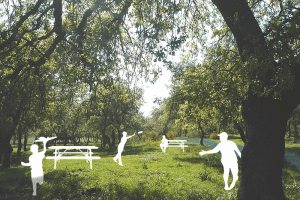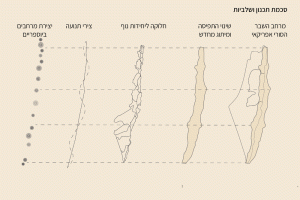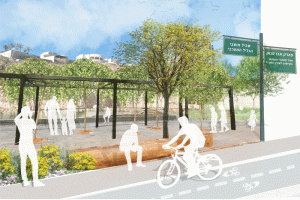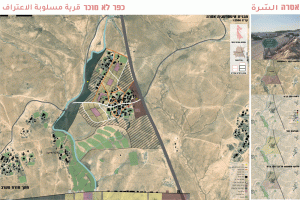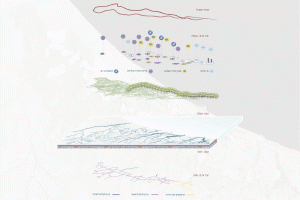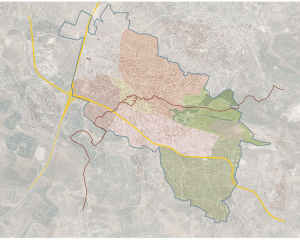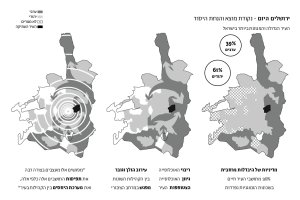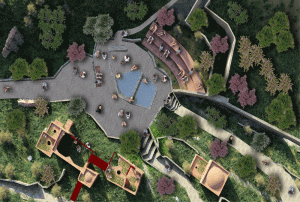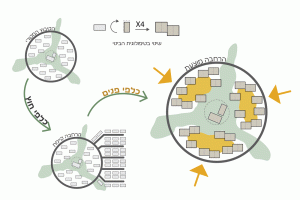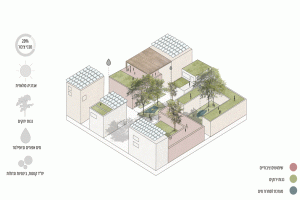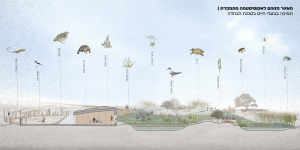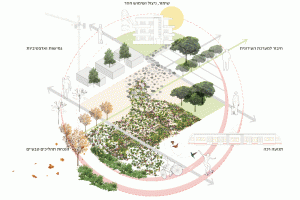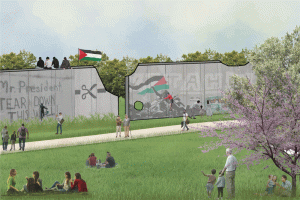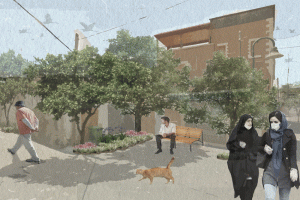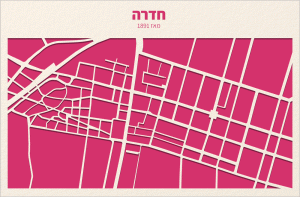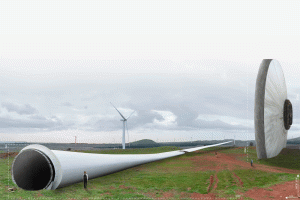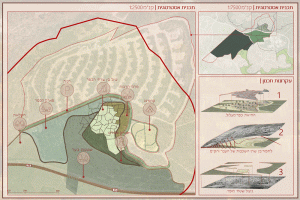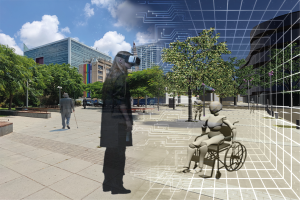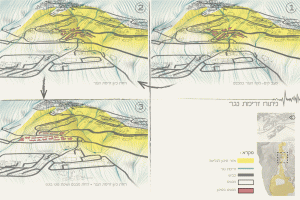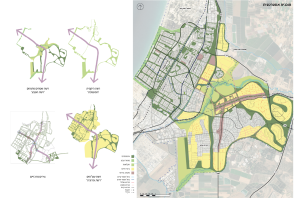Grazing ground
In recent years, a national effort has focused on urban densification, driven by population growth predictions. Natural open spaces in Israel are diminishing, with the Golan Heights being the only continuous stretch of natural land from northern regions to Be’er Sheva. Current development plans threaten the Golan’s unique landscape, characterized by vast basaltic lands, flowing rivers, and grasslands that support the livestock industry. This industry occupies about 60 percent of the Golan’s territory, leading to environmental damage and contributing to the climate crisis.
The Golan Heights may play a critical role in national development by preserving these open spaces, which could become a rare and essential resource for Israel’s residents in the near future. This project proposes an alternative planning approach that emphasizes the Golan’s landscape values while addressing population growth and strengthening the local economy through agriculture.
The main action plan involves defining new statutory entities, such as grazing reserves and regenerative agricultural areas, in addition to established entities like ecological corridors, nature reserves, and national parks. Each entity will operate on a sustainable economic model, collectively creating a continuous system of open spaces.
Transforming the cattle grazing industry, introducing alternative protein sources, and gradually shifting from conventional to regenerative agriculture will yield economic and environmental benefits, generating employment opportunities for residents while preserving the unique open space system.
The Golan Heights has undergone numerous changes over the years, from the Pleistocene period to its occupation by Israel, with each era influencing settlement patterns and agricultural landscapes. The renewed planning seeks to incorporate values from the Golan’s historical contexts, representing a new chapter in its evolution. This approach aims to balance natural systems with human activities, integrating sensitively into the existing landscape and providing platforms for observation and engagement with the environment.
